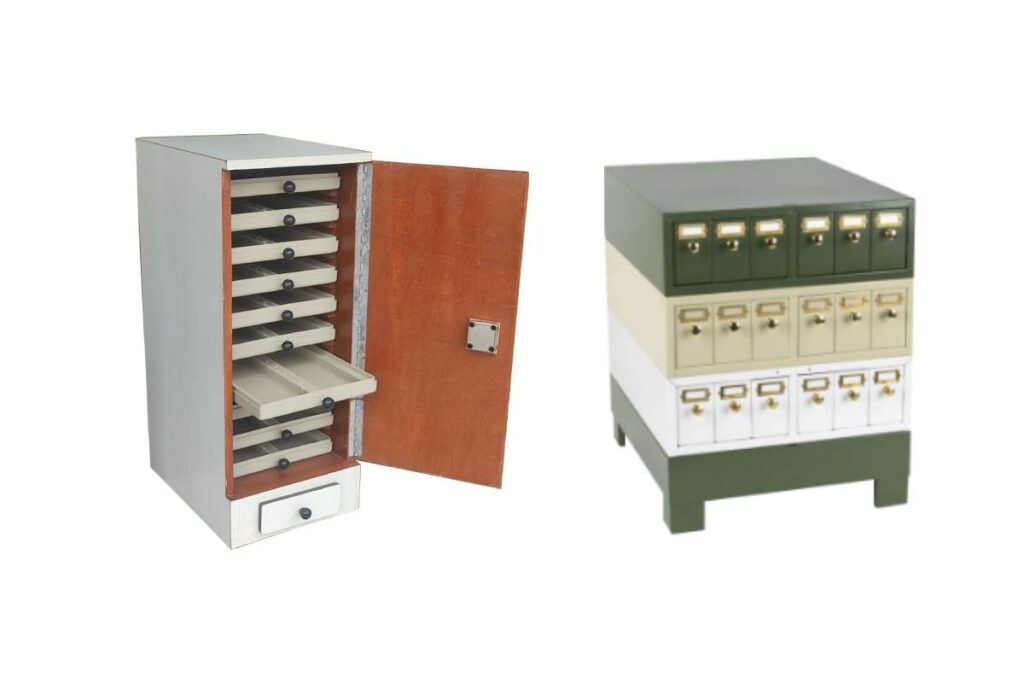It always starts the same way—just a quick reach for the slide you need. Maybe you’re multitasking. Maybe someone else reorganized the drawer without labeling anything. Either way, the next thing you hear is the gut-wrenching clink of glass on tile.
Slide #117. Gone. And with it? Hours of prep. Maybe days. Maybe data that can’t be reproduced.
That moment is exactly why the humble slide storage cabinet deserves more attention than it gets.
This Isn’t Just Storage. It’s Preservation.
Your samples aren’t disposable—why treat them that way?
Biological specimens are fragile. Whether it’s a skin biopsy, stained plant tissue, or a rare research sample, these slides aren’t just records—they’re often irreplaceable data. And yet, far too often, they’re stored in warped trays, dusty drawers, or makeshift organizers from office supply catalogs.
A well-designed slide storage cabinet changes that.
It protects your specimens from:
- Physical damage like warping, cracking, or scratching
- Environmental hazards like dust, humidity, and UV exposure
- Organizational failure (a fancy term for “I lost it and now I’m panicking”)
It’s more than a container. It’s your lab’s insurance policy.
Durability Isn’t Optional
Lab equipment should outlast the research cycle.
A proper slide cabinet is engineered for longevity. Steel construction. Powder-coated finishes. Precision tracks that don’t stick when you’re in a hurry. This isn’t aesthetic—it’s functional.
Because the last thing you want is a sticky drawer catching on a hinge while you’re handling 200 glass slides from a years-long study.
Good design anticipates clumsy moments. It keeps chaos contained and your samples intact, even on deadline days.
Organization That Works (Not Just Looks Good)
Alphabetical, chronological, by grant project—whatever your system, it needs a home.
If you’ve ever used a slide tray that didn’t match your workflow, you know the frustration. The best slide storage systems offer modular options—dividers, labels, indexing—that let you structure your archive your way.
Need to isolate toxicology slides from general histology? Done. Want a dedicated drawer just for stained Gram-positive samples? Easy.
A well-designed cabinet makes categorization intuitive—so you can find what you need without guesswork or digging through stacks of unlabeled boxes.
Climate Control Without the Electricity Bill
Yes, ambient conditions matter—even in storage.
Humidity is the enemy of precision microscopy. Dust, too. And don’t get started on light exposure, especially for fluorescent or photosensitive slides.
The right slide storage cabinet minimizes these risks with:
- Tightly sealed drawers to reduce dust infiltration
- Insulated materials that buffer temperature fluctuations
- Light-blocking construction to protect photosensitive specimens
And it does it all passively—no power cord required.
Space-Saving = Stress-Reducing
Compact doesn’t mean cramped.
Well-designed cabinets are made to maximize vertical space without sacrificing accessibility. That means high-density storage for thousands of slides in a footprint that doesn’t eat up half your lab.
Stackable units, shallow drawers, and ergonomic handles make access easier while freeing up your work surface. Clean lab. Clear head.
Final Thought: Respect the Work, Invest in the Storage
Every cracked slide tells the same story—one that could’ve been avoided.
There’s a moment in every research lab where the focus shifts from “just getting the data” to “protecting the data.” That shift is where infrastructure matters. You wouldn’t trust sensitive reagents to a leaky fridge—why gamble your slides on sub-par storage?
Explore solutions like a purpose-built slide storage cabinet designed for long-term preservation, practical access, and peace of mind. Because your specimens are only as safe as the cabinet you keep them in.
And because no one wants to explain why Slide #117 had to die.

